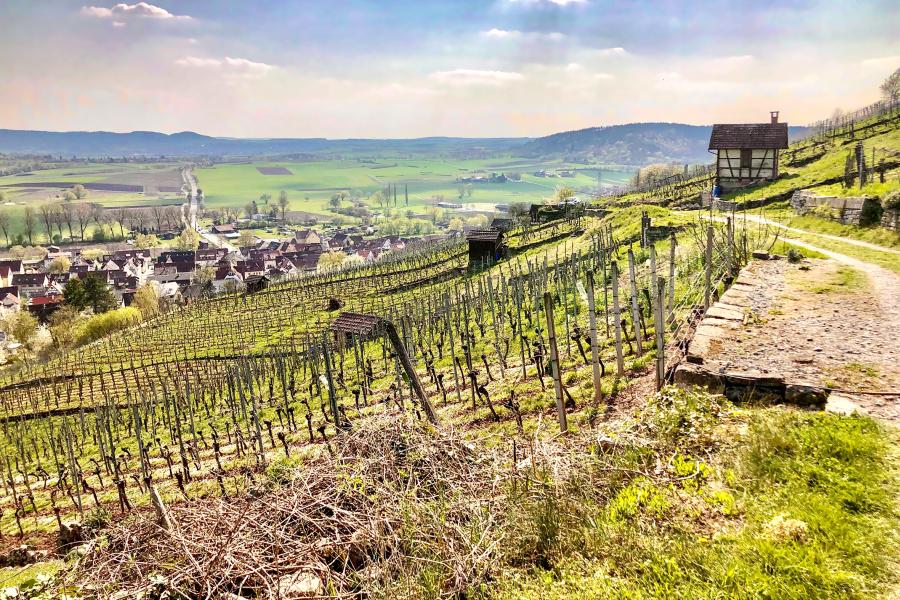Press Releases Archive
30.07.2020
What brought the first farmers to the Ammer Valley?
Researchers compile geoarchaeological record of earliest human-environment inter-actions in the Tübingen region
The Ammer Valley in southwestern Germany is intensively used for agriculture today. But for many thousands of years it consisted of extensive wetlands. At the end of the Mesolithic period, some 8000 years ago, the swampy ground dried up to become a floodplain. Subsequently, people arriving from the Carpathian Basin settled in the valley and began to farm it. The environment and the food they found have now been recorded for the first time in a geoarchaeological record. A team from the Senckenberg Center for Human Evolution and Palaeoenvironment (S-HEP) at the University of Tübingen and the Baden-Württemberg heritage authority has revealed how the landscape of the Ammer Valley changed over long periods of time and in interaction with humans. Their study has been published in the latest Quaternary International.
Working with the state heritage office and with scientists from the University of Tübingen collaborative research center 1253 CAMPOS, the S-HEP researchers analyzed sediment cores from the Ammer Valley to find out how environmental changes more than 8,000 years ago affected the livelihood of humans. Doctoral student Shaddai Heidgen extracted and analyzed organic material such as pollen, spores and tiny charcoal particles from cores taken near an archaeological excavation in the town of Pfäffingen. The project was headed by Annett Junginger, assistant professor of micropaleontology at S-HEP.
As an extensive wetland, the Ammer Valley attracted hunters and gatherers since the Mesolithic period. The environment and climate are recorded in its sediments. The research team was thus able to identify three main periods reflected by the vegetation. Between 10,600 and 10,100 BP, open forests of linden trees, oak, elm and ash and a wide variety of herbs initially dominated the landscape around the wetland. Later, 10,100 to 8,400 years ago, hazel took over as the dominant tree species. Then, 8,200 to 7,800 years ago, the sediment cores and the pollen and spores indicated a dramatic change. The wetlands disappeared and oak forests expanded. The floor of the valley turned into river meadows only sporadically flooded by the Ammer.
Following this transformation, settlers from eastern Europe brought what’s known as the Linear Pottery Culture (LBK) to southwestern Germany. The LBK is considered the oldest Neolithic culture in central Europe and is associated with the beginnings of agriculture and animal husbandry. Its spread across southwestern Germany has been documented at nu-merous archaeological sites. Field research is currently being conducted at one of the oldest settlements, which is near Ammerbuch-Pfäffingen in the Ammer Valley. Finds from the site indicate that settlement began 7,300 years ago. The results of the site excavations under the direction of Professor Raiko Krauss (University of Tübingen) and Dr. Jörg Bofinger of the heritage authority, the Landesamt für Denkmalpflege, have been incorporated into the current study. Botanical analyses by Dr. Elena Marinova and Dr. Oliver Nelle (Landesamt für Denkmalpflege) suggest that the transformation of wetlands into watermeadows provided valuable food resources. Among those resources were wild fruits such as apples, and hazelnuts. The nutrient-rich meadows were also ideal for the first forms of agriculture. Evidence from the site shows that the main crops were hulled wheat – mostly emmer and einkorn – and legumes such as peas and lentils.
“This study from the southwest is one of the few in Germany in which we have local, con-tinuous environmental information from the past via sediment cores – right next to an exca-vation and integrated into the archaeological context,” says Annett Junginger. “This combi-nation gives us a better understanding of how a changing landscape affected the people in it, and vice versa.”
Publication:
Shaddai Heidgen, Elena Marinova, Raiko Krauß, Oliver Nelle, Martin Ebner, Tanja Märkle, Tatiana Miranda, Jörg Bofinger, Stefan Klingler, Annett Junginger: “Palaeoenvironment and potential resources for early Holocene subsistence in the Ammer River Valley (Germany) based on palaeoecological and bioarchaeological evidence.” Quaternary International, https://doi.org/10.1016/j.quaint.2020.05.038
The publication is part of the special volume, LBK & Vinča – Formation and Transformation of Early Neolithic Lifestyles in Europe in the second half of the 6th millennium BC, of the journal Quaternary International. It was edited by Professor Raiko Krauß (University of Tübingen), Dr. Jörg Bofinger (LAD) and Dr. Bernhard Weninger (University of Cologne), summarizing the key contributions to an international conference at the University of Tübingen from March 21-23, 2019. The conference was funded by the German Research Foundation and the State of Baden-Württemberg.
Contact:
Dr. Annett Junginger
University of Tübingen
Senckenberg Center for Human Evolution and Palaeoenvironment (S-HEP)
+49 7071 29-75689
annett.junginger@uni-tuebingen.de
Shaddai Heidgen, MSc
University of Tübingen
Senckenberg Center for Human Evolution and Palaeoenvironment (S-HEP)
+49 7071 29-774689
shaddai.heidgen@uni-tuebingen.de

